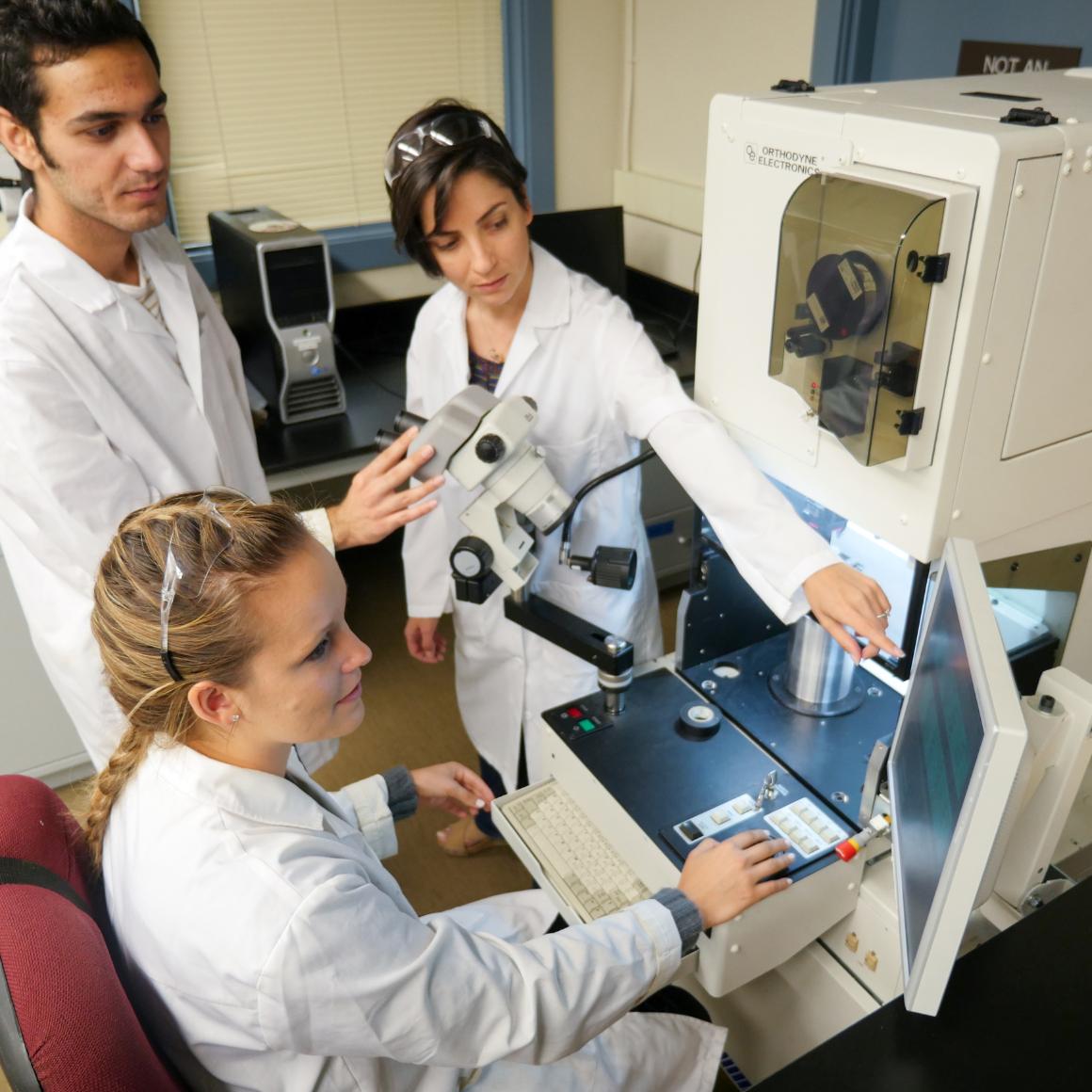
Sepehrband Awarded NSF Grant
Curious, inquisitive, dogged, persistent … all fitting words to describe Panthea Sepehrband, mechanical engineering assistant professor. She’s also crazy intelligent, funny, supportive, and generous—but we’ll save those for another time. Recently, Sepehrband was awarded $328,975 in NSF Grant Opportunities for Academic Liaison with Industry (GOALI) funding to investigate how ultrasonic bonding occurs at the atomic level. But getting that funding was anything but easy.
The award is a testament to Sepehrband’s persistence. When she came to SCU from Canada in 2012, she was just starting her research in wire bonding—the technique used to interconnect integrated circuits and their packaging during semiconductor fabrication. “Ultrasonic vibration is essential for various solid-state bonding techniques used in the consumer electronics, defense, automotive, and aerospace industries,” she explained. “We know this process works, but we don’t know why or how; I wanted to find out.”
Curious as to whether her research would also be of interest to industry, she put a Google alert on her computer using the buzzword “wire bonding” and soon found herself at a workshop talking with as many people as she could, testing the waters. “The research matches well with my background, but I wasn’t sure if it was worth pursuing for industry,” she recalled. Turns out the folks at Kulicke & Soffa (K&S), a leading provider of wire bonding machines for micro packaging, were very interested. Enough so that they donated a machine for her lab, sent an installer, and trained her students on its use. Since then, Sepehrband and K&S have been working together on a mechanism of bond formation.
Prior to this collaboration, Sepehrband and her co-PI, mechanical engineering Adjunct Professor Calvin Tszeng, had begun submitting NSF funding proposals, with limited success. “Coming from Canada, I had no experience with NSF,” Sepehrband said. “It’s very easy to get small amounts of funding in Canada; but here it is very competitive because you are vying for bigger money. I had to spend a lot of time learning how to apply for funding. I attended workshops, learned how to write proposals, bugged the NSF program officer at any conference I attended, and eventually was invited to review proposals. It was a long process of learning and building a network here in the United States.”
A 2013 proposal uncovered another roadblock. “Initially, reviewers questioned the capability of SCU to conduct this level of research,” she said. “So over the past four years I’ve used any means I could to build up a strong foundation. I’ve obtained 14 internal grants from the School of Engineering and the Department of Mechanical Engineering, ranging from under $5,000 to $170,000 to outfit my lab and to support student researchers from undergraduate through postdoc. With these funds, I’ve been able to add a nanoindenter for measuring and testing very small volumes of mechanical properties.
“The School and my department have been very generous, and I’m so grateful for their support. I also tapped into SCU’s Center for Nanostructures, using their equipment for analysis. All this made it very clear to the reviewers–upon the fourth submission–that SCU can definitely conduct this level of research!” she added, with a laugh.
Having built the foundation and landed the funding, the three-year research project is off and running. The work is divided into three sections: atomic scale modeling conducted by Ph.D. students; experimental analysis and materials characterization performed by undergraduates and graduate students; and finite element analysis. “The nice thing about this project is that it has multiple levels of complexity,” said Sepehrband, “so we can have Ph.D., M.S., and undergraduate students working on various aspects of the research. Calvin will advise graduate students on finite element modeling, and Henri Seppaenen from K&S will serve as a general advisor. The close collaboration with an industrial partner provides a unique learning environment for the students, preparing them with relevant experience that is closely aligned with the needs of Silicon Valley’s microelectronics industry,” she added.
Based on the combination of modeling results and experimental analysis, Sepehrband and Tszeng plan to create a new workshop for university outreach activities promoting STEM fields among K-12 and underrepresented students. “It’s exciting to get the younger generation interested in materials science and engineering,” Sepehrband said. “I’m still amazed at this bonding; I can’t wait to figure out why and how it happens!”
Panthea Sepehrband oversees the research of Ph.D. student Milad Khajehvand and undergraduate Jamie Ferris. Photo: Nicole Morales